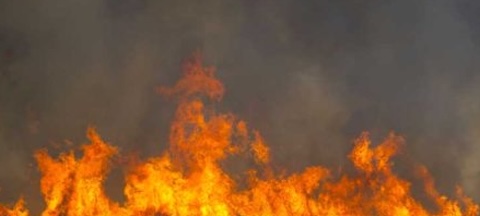New director hired for Wallowa Avalanche Center
Published 12:56 pm Friday, December 23, 2016

- Chief Joseph Mountain in the Wallowas is a popular place for backcountry skiing and a common place for avalanches. Through the center’s website, advisories are posted once or twice a week. Victor McNeil, the center’s director, is also one of three avalanche forecasters in the region.
A new director has been tabbed for the Wallowa Avalanche Center, and not a moment too soon as early season conditions are ripe for backcountry excursions in Eastern Oregon.
Victor McNeil, a professional ski guide for Wallowa Alpine Huts in Enterprise, was officially hired Monday by the nonprofit avalanche center. He succeeds former director Kip Rand, who died March 8 in an avalanche while backcountry skiing near Chief Joseph Mountain in the Eagle Cap Wilderness.
Trending
Founded in 2009, the Wallowa Avalanche Center provides regular updates and observations on avalanche conditions in the Wallowa, Elkhorn and Blue mountains. Weekly reports are posted to the center’s website, and volunteers host educational clinics on how to identify avalanche terrain.
Julian Pridmore-Brown, deputy director for the center, said McNeil has broad outdoor experience and knowledge of the local mountains, which makes him a good fit for the position.
“I’m really excited to see Victor take the reins,” Pridmore-Brown said. “We’re thrilled to have him.”
As director, McNeil will oversee a team of snow observers whose job is to monitor avalanche conditions on the ground. The center also maintains three weather stations, at Salt Creek Summit and Mount Howard in the Wallowa Mountains, and at Anthony Lakes in the Elkhorns.
The goal is to compile information that can lower the risk of accidents and fatalities, while promoting safe backcountry travel, Pridmore-Brown said.
“Oregon has had relatively few avalanche fatalities, but the fatalities that have been in Oregon have been clustered in northeast Oregon,” he said.
Trending
One incident happened earlier this year, when Rand — an experienced backcountry skier, guide and observer — was killed after being swept down 1,200 feet in an avalanche. It was the fourth backcountry skiing fatality in the Wallowa Mountains since 2009.
Rand was hired as director of the Wallowa Avalanche Center in 2015, and his death was a personal blow for everyone, Pridmore-Brown said. The center had high hopes under Rand’s leadership, and the tragedy left behind a void for the group’s board of directors to fill.
“We, as the board of directors, had a very clear picture of where we wanted the center to go and what our mission is,” Pridmore-Brown said. “That was never in doubt.”
Enter McNeil, who has spent past seasons as an observer for the avalanche center while guiding backcountry trips for Wallowa Alpine Huts. McNeil was already prepping weekly avalanche advisories for the coming season before he was hired Monday.
Connelly Brown, owner and operator of Wallowa Alpine Huts, said the avalanche center plays a critical role in preparing backcountry skiers for what to expect on the mountain.
Wallowa Alpine Huts has been in business since 1980, renting camps and offering guides for backcountry skiers in the Eagle Cap Wilderness. Brown said they have forged a symbiotic relationship with the avalanche center, and several of his staff — McNeil included — double as observers.
“What the center provides is a resource for decision-making about where to go skiing, and what to do when we get there,” Brown said. “That’s part of the experience.”
Conditions are already excellent for backcountry skiers in the Wallowas, Brown said. A series of storms battered the mountains, dumping up to 3 feet of snow at the cabins and 5 feet in basins. Such a strong start has made the snow deep and stable, Brown said.
Melissa Webb, hydrologist with the Natural Resource Conservation Service, said the current snow-water equivalent, or amount of water contained within snow, is 111 percent of normal for the area, including the Grande Ronde, Powder, Burnt and Imnaha river basins.
“We’re always happy to have such a strong early start to the snow season,” Webb said. “Certainly for folks out enjoying the snow, it’s a good start to the year.”
Eastern Oregon might not be the most famous backcountry terrain, or the easiest to access, Pridmore-Brown said. But it definitely has its rewards.
“The mountains are truly spectacular,” he said. “We’re just trying to reduce the risk and number of accidents out there.”
———
Contact George Plaven at gplaven@eastoregonian.com or 541-966-0825.









